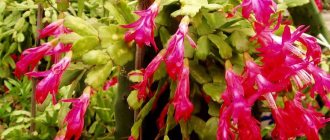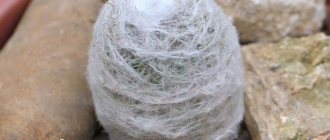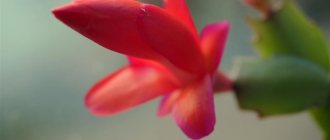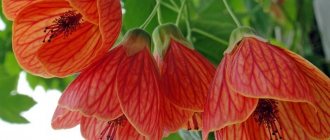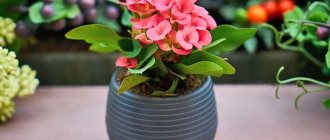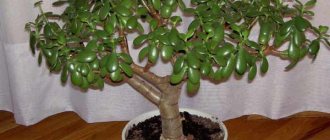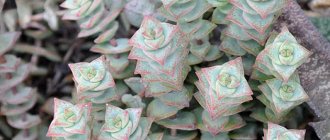Cacti can be called the most durable plants on the planet. They adapt to extreme heat and drought and grow in places where other green spaces simply cannot survive. Cacti belong to the perennials of the order Dianthus; there are hundreds of species in the world, some of which are found in the Atacama Desert, where the highest temperatures on Earth are recorded.
At their core, these flowers are succulents, which, when kept at home, do not require careful care and are not capricious.
We associate cacti with thorns; some varieties look downright scary, such as Tunilla. Its flat sheets with small spines are very similar to a kitchen grater: as soon as you lose your vigilance, they will scratch you and draw blood. But there are such plants without thorns at all. They are beautiful and completely safe. Let's take a closer look at them.
Hathiora
When you first look at this plant, you would absolutely not think that it is a cactus. Hatiora has neither thorns nor leaves. Instead, there are many stems, branching in different directions and resembling individual segments. For such an original appearance, the British call this flower the dancing bones cactus. Brazil is considered its homeland, from where the flower has spread to many countries. In temperate climates, Hatiora thrives well, as it does not like too high temperatures. The optimal temperature in summer is up to 22 degrees above zero.
Yellow “bells” appear at the ends of the stems in February-March. With the arrival of summer, the flower can be taken out into the fresh air and watered once every five days, while protecting it from drafts.
In winter, the crop does not need frequent watering - once every two weeks is enough. It is important to let the soil dry out well.
Echinocereus
A large genus from the Cactus family, there are more than 60 species in nature. Its homeland is North America, the southern regions of the continent. A lot of species have been cultivated by amateurs, some have gained great popularity: Reichenbach and its subspecies - Armatus, Bayle, Albispinus, Alberti, Trekhkolyuchkovy, Hardest, Beskolyuchkovy. They gained popularity even among other cacti due to their absolute unpretentiousness. But still, in order for the plant to look good and bloom fully, it is necessary to provide good lighting all year round. In summer, it is better to take Echinocereus out onto the balcony or terrace.
The optimal temperature range in summer is from 25 to 30 degrees. In winter, to ensure a dormant period, it is necessary to provide the plant with a temperature of about 10 degrees. As for watering, during the growing season, water moderately, waiting for the soil ball to dry completely. Excessive watering can cause cacti to rot. During the dormant period, plants are hardly watered. If the plant is well rested, it will definitely bloom. Flowers are common for cacti: single, tubular, multi-petaled.
- Also read our article: 15 rare species of succulents!
Rhipsalis
Most often, rhipsalis is found in South America, but it also grows in some regions of India. The flower does not look like a cactus at all, since the stems are devoid of thorns, have a rounded, sometimes ribbed shape, and are capable of hanging and branching, which is why rhipsalis decorates the interiors of houses, suspended in baskets. By the way, when kept at home, this plant often pleases with flowers of various shades: white, red, pink, yellow.
The temperature for keeping rhipsalis should not be below ten degrees, and the lighting is not too bright for it. The roots of the flower are aerial, requiring constant spraying. From the beginning of spring until the arrival of autumn, rhipsalis must be watered so that moisture is always retained in the ground. Fertilizing the flower will not hurt either.
Determining the species by external qualities
Are you growing a cactus, but don't know what it's called? The variety can be determined by its external data .
Blooming
All cacti bloom, but not all can bloom at home. In this case, flowering differs depending on the variety .
Mammillaria
They bloom mostly in small blooms. Possible colors: yellow and pink . It has several flowers; they may not open simultaneously, but alternately.
Echinopsis
Has many varieties. Therefore, the colors of the flowers are varied: white, yellow, red, hot pink . Blooms with numerous flowers.
Astrophytum
It is notable for the fact that only one flower blooms . However, it is large in size and yellow in color.
Decembrist or Schlumberer
Notable for the fact that it blooms in winter . They call it Decembrist because it blooms on New Year's Eve. The flowering is large and red in color.
Cacti with leaves
In general, all representatives have leaves. However, they are represented by spines. If we talk about cacti that actually have familiar leaves, we can call them Pachypodium .
Epiphyllum
This plant, which received the popular name “forest cactus,” “came out” from the tropics of America. Epiphyllum has neither leaves nor spines - they are replaced by flat or triangular stems, painted in a rich green hue. Flower growers love this cactus because of its very beautiful flowering. The diameter of the flowers, which can be orange, purple, white, reaches 12 centimeters!
If you want to plant an epiphyllum and enjoy its beauty, protect it from direct exposure to ultraviolet radiation. The best place for a flower is where there is diffused light. Fully shaded areas are not suitable for keeping this type of cacti. Make sure that the temperature in the room where the epiphyllum is located is in the range of +20 - +25 degrees , and in winter - +12 - +15 degrees. The flower does not have any special requirements for air humidity.
Chamaecereus
Chamecereus is native to Argentina, is a cactus up to 10 cm high and shoots with a diameter of 1 cm. Long shoots have a light green color and bright red flowers. Has one type of Silvestri.
The cactus prefers bright light, but at midday it must be shaded, otherwise the shoots may acquire a red tint. Lack of lighting causes the shoots to stretch and flowering is delayed.
The temperature needed is 24-28 degrees in the summer, which is quite consistent with the summer temperatures of the middle zone. Watering during intensive growing season should be plentiful. But you need to make sure that the top third of the layer dries out between waterings.
By winter, the temperature is gradually reduced to 10 degrees, and watering is practically stopped. If the plant does not get proper rest, it will not be able to bloom to its full potential.
Pereskia
When in bloom, this cactus looks more like a rose. It is one of the most ancient plants on the planet, growing in the driest and hottest places. Pereschia looks like a small tree, its smooth and succulent leaves can be colored green or purple. They have small spines, but they are practically invisible. Pereskia loves a lot of sun and warmth, the optimal temperature for keeping it is from +22 to +25 degrees . It is recommended to water the plant as the soil in the pot dries out. The less often you do this, the better this flower will feel.
Acanthocalycium
Acanthocalycium belongs to the genus of cacti and has only four species: Spiny-flowered, Yellow-flowered, Peitscheranium and Climpelianum.
The plant has a spherical shape that stretches upward over the years. Both species are covered with yellowish spines. Loves good lighting and is not afraid of direct sunlight. With sufficient light, it blooms from May to September. Flowers are from 4 to 7 cm in diameter, yellow or white-pink. Feels great during the active period at a room temperature of 25 degrees; during the rest period you need to reduce the temperature to 8-10 degrees. Watering is plentiful, but due to the looseness of the soil and drainage, the water should not stagnate. At rest, watering can be reduced to a minimum.
Lophophora
The second name of this cactus, which is native to America and Mexico, is peyote. Its shape is spherical, consisting of convex parts, the surface of the stem is velvety. Lophophora blooms exclusively in summer. The tubular flowers with many red or white petals are small in size and reach only two centimeters in diameter.
Such a flower can decorate any interior, but only with proper care. Lophophora prefers diffused light and can withstand high temperatures, so in summer it can be left outside even in extreme heat. However, with the arrival of winter, care should be taken to ensure that the air temperature in the room where it is kept does not rise above ten degrees. Therefore, place this green darling on the veranda or balcony. Watering should be done a few days after the soil in the pot has completely dried out. Experts advise feeding the flower with fertilizers during periods of intensive growth at least once a month.
Selenicereus
The genus Selenicereus belongs to the Cactus family and has 24 species of plants of various habitat forms. This cactus is native to the tropical forests of South America. The peculiarity of this species is long and narrow shoots with ribs and aerial roots with which the plants cling to the supports. Unfortunately, out of the entire variety of species, only three are cultivated. The most common is Selenicerus grandiflora, and less known: Anthony and Hooked.
Selenicerus has the largest flowers. They reach 30 cm in diameter, have many long stamens and have the amazing ability to bloom at night; flowering stops with the arrival of dawn. For this feature, the plant received the name “Queen of the Night”.
Selenicerus, like all similar cacti, loves a lot of light, so it is better to place it on southern windows. Feels great at temperatures in central Russia. But it does not tolerate drafts and sudden changes in temperature - in such conditions it drops its buds. It should be watered when there is no moisture in the pan and the top layer of soil has dried well. Water should be soft, settled or filtered at room temperature.
Features of caring for cacti
The fact that cacti are one of the most unpretentious plants does not mean that they are not worth caring for. Each species needs special treatment, but there are general rules that must be followed in order for the cactus to become a decoration for your room.
Cacti, which naturally grow in deserts, love plenty of sunlight. For this reason, it is better to place them on the window sills of windows facing South. If you don’t have such a window in your house, the east side will do. Forest cacti are designed to be placed on the south or north sides. From excess sun, their leaves and stems will become pale, and the plants may not survive the dormant periods between flowerings.
In late spring and summer, take cacti outside, but only if the weather is sunny and warm. Abundant rainfall will not benefit such green pets. If the heating in your apartment is too hot in winter, keep these plants cool. They can be placed on a glazed balcony or in another place. You can also solve the problem by increasing the humidity in the room. In winter, it is better to move cacti from the south side to the north. The main thing is that the air temperature does not rise above +17 degrees.
Despite the fact that cacti have a reputation for being drought-resistant species, watering cannot be completely avoided. All plants need water, so water your succulents as the soil in their pots dries out. Use settled water at room temperature, and, if possible, accumulate rain or melt water, which is ideal for caring for most green spaces. In spring and summer, watering is carried out once every two to five days, in autumn - once a week, in winter - once every one and a half to two weeks.
Notocactus
Botanists brought this plant into the Cactus family. It grows mostly in Paraguay and Brazil. There are approximately 20 species, but only a few are suitable for indoor floriculture. The most common three types: Graceful, Reddish, Yellow-pink. They all bloom beautifully.
The stem of Notocactus is spherical or cylindrical, with strongly pronounced ribs, covered with numerous bunches of spines. The plant needs to receive enough light. Daylight hours should not be less than 10 hours. This can be milked in winter only with the plant illuminated.
Also read: Long-lived cactus with a wonderful name - Cereus
In summer, a temperature of 22-25 degrees is very suitable for notocactus, but in order for the plant to bloom, it must be in a dormant period in winter at a temperature of about 10 degrees Celsius.
Watering in spring and summer is plentiful; the substrate should not be allowed to dry out; in winter, watering is reduced. The water should be soft or rain. You can use filtered water.
How to propagate a cactus
Cacti can be propagated either by seeds or by shoots. The second method, which has proven its effectiveness, is very popular among gardeners. The shoots, as is the case with most plants, are taken from adult specimens and then rooted. The process proceeds quite quickly.
In stores you can buy planting material - seeds. Before placing them in the ground, they should be disinfected in a manganese solution. Germination occurs in a humid environment. Some species produce shoots after a day, but there are also those that take months to do this.
Succulents with oblong foliage
This kind of cacti is characterized by its “longevity”. The fact is that the root system of such succulents is very powerful and developed, due to the fact that it has to provide such a large area of the cactus with nutrients and liquid. Plants are predominantly green. With large, long-lasting leaves.
Some varieties of cacti with long leaves can form small peas at the ends of their bodies, which can be mistaken for edible.
Beneficial features
Prickly pear is not only a cactus, but also a very useful plant. It contains a huge amount of useful elements and vitamins. For example, stems contain amino acids, protein, starch and much more. From the vitamin group, we can note the presence of vitamins A, B (1,2,3) and C.
Not only the stems contain a lot of useful things, but also the fruits of Opuntia. They are tasty, juicy and rich in phosphorus, magnesium, protein and calcium, as well as glucose.
Thanks to all this, many medicines are produced from Opuntia that help fight various diseases, for example, disorders of the central nervous system, cardiovascular diseases, and diabetes. In addition, with the help of Opuntia, people successfully fight excess weight, skin diseases, rheumatism, etc.
In addition to medicines, glue, oil (something like sunflower or olive), detergents and cleaning products, as well as various cosmetics, which, by the way, are not so cheap, are made from Opuntia.
What a useful plant!
Reproduction
If you suddenly want to propagate Opuntia, you can do this in two ways:
- Seeds;
- By cuttings.
Seeds
This method is not very popular, because it is quite problematic. Not all seeds germinate, and it even happens that none at all. We have previously written about how to grow cacti from seeds, so the principle here is exactly the same, but there is one difference. Opuntia seeds have a rather dense shell, so they should first be rubbed with a file or sandpaper, and then soaked in potassium permanganate.
And then everything is as usual. Soil is poured into the greenhouse, holes are made there and seeds are planted. After this, you need to wait for shoots. The first transplant is performed after 3 months. More details are written in our separate article.
Cuttings
The most preferred method, which is much more effective than the previous one. There is nothing complicated about cuttings. First of all, take a well-sharpened knife and select any healthy shoot on the stem. Then, it should be cut off and then placed in an upright position in a place where it can dry a little. Usually it takes 3-4 days until a film appears at the cut site.
Also read: Cactus - Euphorbia Euphorbia: 5 popular domestic species + care
Next, the dried cuttings should be planted in a container with wet sand, to a depth of 5-6 cm. The container itself must be covered with cling film and allowed to be ventilated periodically, as well as occasionally watered. As soon as the seedling has roots, it should be transplanted. How to do this can be read above.
